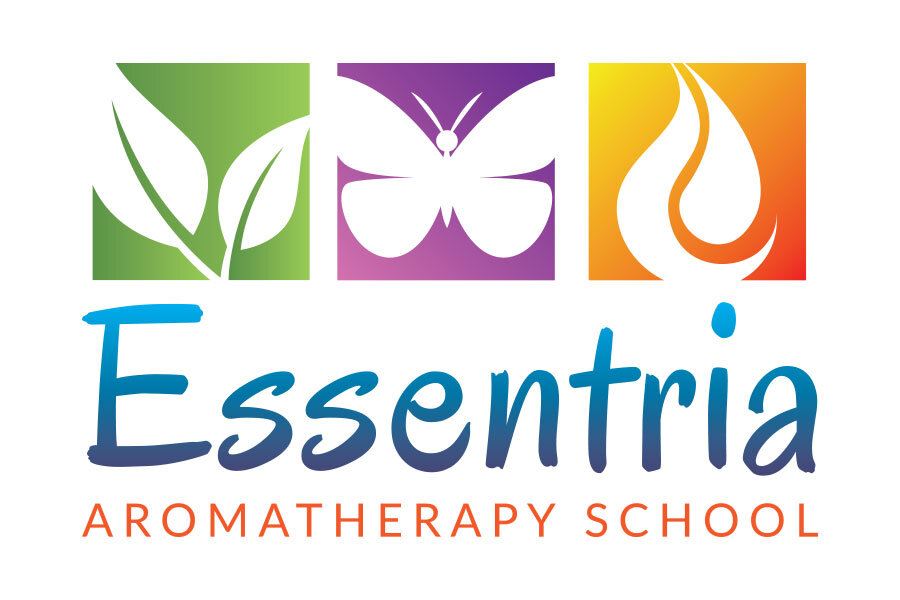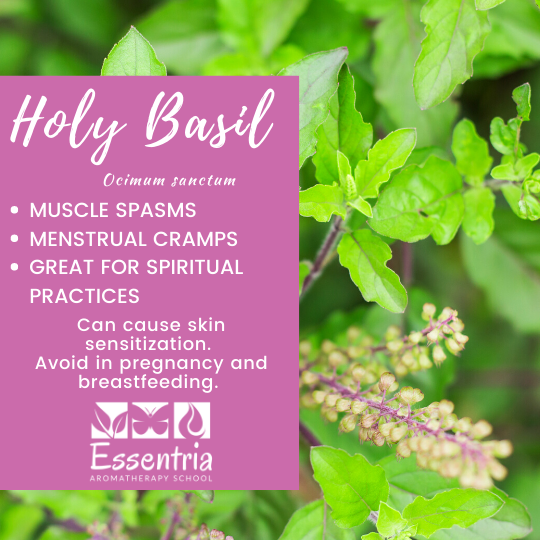Holy Basil - Essential Oil Profile
Holy Basil also known as Tulsi (Ocimum tenuiflorum, Ocimum sanctum)
Holy basil is also known as Tulsi or sacred basil. In Ayurveda, Holy basil has been used for over 3000 years and it still continues to grow abundantly in India. It also grows in central and South America Puerto Rico Asia and Malaysia. Tulsi in Sanskrit means ‘beyond compare’. Some referred to holy basil as mother nature's medicine or an elixir of life or the queen of herbs, these many names emphasize its healing benefits both physiologically and spiritually.
There is actually more than one type of holy basil, there are three types Rama Tulsi, Krishna Tulsi and Vana Tulsi. Each type of Tulsi offers slightly different benefits although many are used interchangeably. They all carry the same botanical name, so suppliers unfamiliar with this plant may not realize the common name is the distinguishing factor and some suppliers may not even realize there are more than one common name.
What is Holy Basil
Holy Basil is a herb well known for its adaptogenic benefits. Adaptogens are a herb or something considered natural that helps the body on a molecular level ‘adapt’ or normalize stress and changes.
The plant is green with a green flowering like petal top, it almost looks similar to lavender, but the flowering tips are less dense. The flowering tops can be green or a slight shade of purple.
The plant can grow up to 2 feet tall and the essential oil is extracted using steam distillation of the leaves and flowering tops.
Aromatherapy Uses
Holy Basil essential oil possesses a sweet warm and spicy scent.
The essential oil is not as easy to find as it’s not commonly used in aromatherapy, but the herb can be found in almost every health shop and in most adaptogenic supplements.
In aromatherapy there are actually more than one chemotype, such as methyleugenol, but the most available chemotype is eugenol.
Methyleugenol may be considered carcinogenic, so we suggest avoiding any essential oils with this constituent. It is noted the risks are low, but generally the intention of aromatherapy is to help while reducing or avoiding the risk of harm.
This is a major reason why sourcing matters, your supplier should be providing GCMS reports so you and your healthcare team can be fully apprised of any risk factors.
A few specific conditions Holy basil essential oil can be helpful for are;
parasitic infections,
respiratory conditions,
menstrual cramps,
muscular spasms and
physical fatigue.
Some of the therapeutic benefits include;
antibacterial,
calmative and
restorative.
Due to its sensitizing nature, we feel aromatic uses are best. We suggest blending holy basil in a diffuser blend or aroma inhaler for an adaptogenic pick me up for that mid-afternoon slump!
Contraindications and Safety Considerations
Holy basil might inhibit blood clotting, cause skin sensitization and should be avoided with many medications. If you have a medical history that needs to be considered or are on medications, we strongly encourage you to connect with a clinical aromatherapist for effective guidance. If holy basil is not an ideal essential oil for your needs, an aromatherapist will be well trained in alternative essential oils that can work just as effectively is not more.
Additional safety considerations include;
dermal max of 1%, provided the Eugenio content is not higher than 50.4%, the International Fragrance Association (IFRA) actually suggests limiting the dermal max to 0.05%,
in Europe there are dermal restrictions of 0.07,
not for use in baths and showers,
avoid while breastfeeding and in pregnancy
do not use neat!
References:
La, Forêt Rosalee de. Alchemy of Herbs: Transform Everyday Ingredients into Foods & Remedies That Heal. Hay House, Inc., 2017.
Worwood, Valerie Ann. Complete Book of Essential Oils and Aromatherapy: Over 800 Natural, Nontoxic, and Fragrant ... Recipes to Create Health, Beauty, and Safe Home An. New World Library, 2016.
Tisserand, Robert, et al. Essential Oil Safety: A Guide for Health Care Professionals. Churchill Livingstone/Elsevier, 2014.
LEARN MORE WITH ESSENTRIA
Want to learn more about how to use essential oils in your home? Check out our free no strings attached online course here.
Plus consider joining us in our Facebook group Love Essential Oils with Essentria where we post tips and tricks on how to use aromatherapy safely in your daily life.
Want to learn more about how to become an aromatherapist, check out our certification courses and bundles offered online here.



